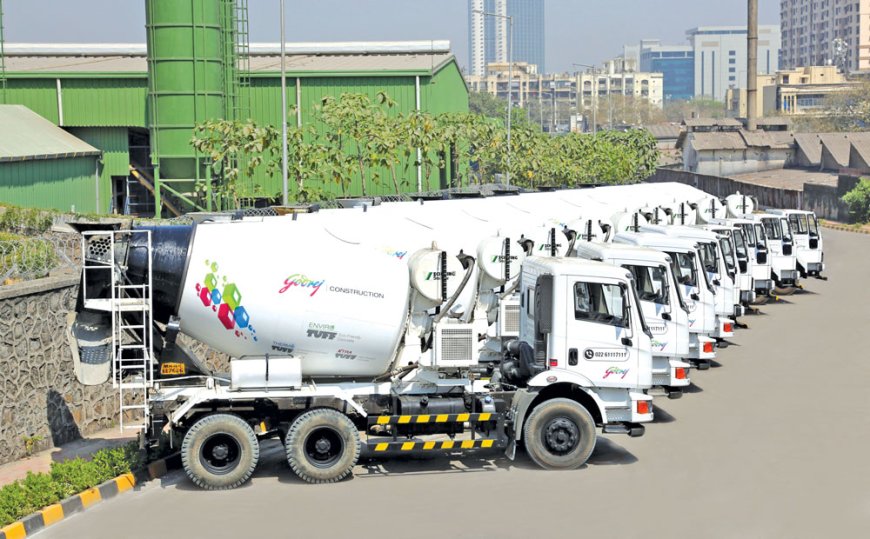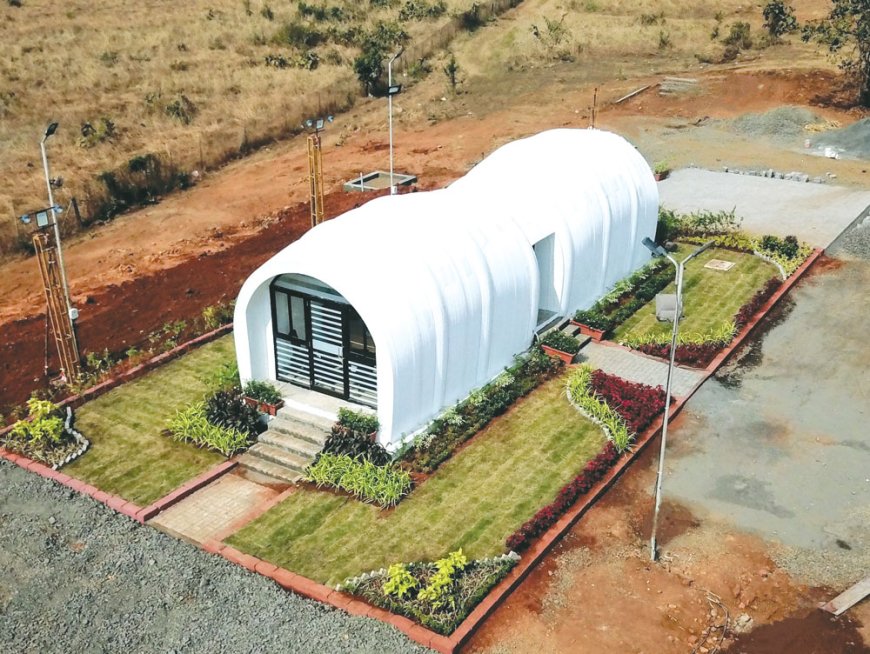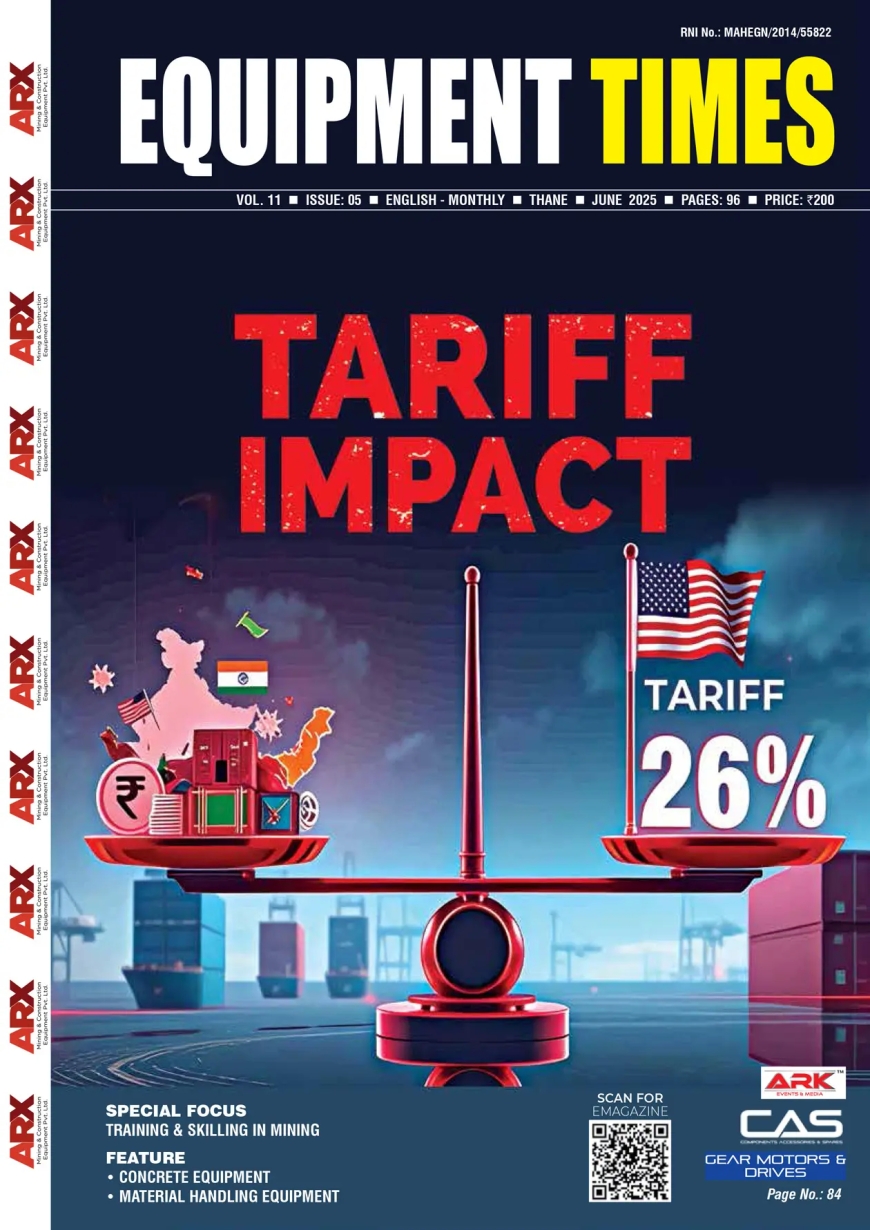Embracing innovation and technology is integral to our strategy.

Abhijeet Gawde
Head - Business Development and Marketing, Construction business of Godrej & Boyce (Godrej Enterprises Group)
What sustainable technologies and practices has your company implemented in your range of construction equipment?
At Godrej & Boyce, environmental stewardship is at the core of our operations. To minimize our carbon footprint, we have implemented eco-friendly production processes and energy-efficient technologies. We adhere to stringent waste management protocols, recycling water and other materials to reduce waste.
Our 4 Ready Mix Concrete (RMC) batching plants in the Mumbai-MMR & Pune region have been commended with the ‘Green Pro’ certification by the Indian Green Building Council (IGBC). Godrej Construction is one of the first in the RMC industry to switch to 100% green energy. Our 6 out of 7 Ready Mix Concrete manufacturing plants are switched to ‘GREEN POWER’. We have received ‘GREEN ENERGY CERTIFICATE’ issued by the Maharashtra State Electricity Board (MSEB).
Recently, our Recycled Concrete Materials Manufacturing Plant in Vikhroli, Mumbai has been awarded with ‘Green Co’ Gold Certification by the IGBC. This plant runs on 100% Green Power.

How do you foresee the role of green technologies evolving in the construction equipment industry over the next decade?
Embracing innovation and technology is integral to our strategy. Through research and development, we explore new construction techniques and materials, such as 3D Construction Printing Technology, to enhance efficiency, safety, and sustainability.
Recently, we unveiled ‘The Cocoon’ a 500 sq.ft. 3D printed office at Khalapur which was installed and made fully functional in under 40 hours.
The structure, printed at the Godrej & Boyce Campus in Vikhroli, Mumbai using innovative 3D Construction Printing (3DCP) Technology was installed and made fully functional within an impressive 40-hour timeframe. This structure, ‘The Cocoon’ was created in the form of prefabricated modules, using innovative 3D Construction Printing (3DCP) Technology.
The office is thoughtfully designed to explore the potential of 3DCP technology, showcasing design flexibility through unconventional curvilinear elliptical design. The entire layout is column-free offering maximum usable office space, installed with a prefabricated toilet unit.
The project construction included complete installation of 3D printed modules, civil works, waterproofing, flooring, external & internal painting, electrical works, lighting, AC installation, plumbing, drainage & sanitation fixtures, office furniture and landscaping in under 40 hours.
Construction of ‘The Cocoon’ is enabled through effective team collaboration integrated with good project planning using tools like Building Information Modelling (BIM), Lean Construction methods and 3D Construction Printing. Effective team collaboration integrated with project planning tools like Building Information Modelling (BIM) and Lean Construction methods enabled the construction of ‘Cocoon’ in an impressive time frame. BIM modelling played a significant role in the sequencing.
The office was created using a sustainable concrete mix design comprising 20% of Recycled Concrete Aggregates (RCA) sourced from concrete waste debris, recycled at the Godrej & Boyce Recycled Concrete Materials manufacturing plant, at Vikhroli, Mumbai.
From its use of recycled concrete aggregates sourced from construction debris to its progressive Solar tree structure that generates solar energy using photovoltaic panels, every aspect of Cocoon embodies environmental stewardship, making it an off-grid structure. Surroundings of cocoon are also deployed with Reed Beds a nature-based solution deployed to treat wastewater to reuse quality or for safe discharge into the environment. For this project, Godrej Construction worked in collaboration with a start-up founded by alumni of the Indian Institute of Technology (IIT), Madras – Tvasta. The modular concrete office components were printed using a gantry printer, with full integration of MEP (Mechanical, Electrical, Plumbing) to save time.
The construction equipment industry will undergo a significant transformation over the next decade, driven by environmental concerns and government regulations. Green technologies will play a crucial role in reducing emissions, promoting energy efficiency, and minimizing waste. This will be achieved through the electrification of equipment, autonomous and connected technologies, sustainable materials and recycling, energy-efficient designs, carbon capture and utilization, and digitalization. By 2030.

What challenges do you face in incorporating green technologies, and how are you addressing them?
To promote higher uptake of recycled products made using recycled concrete debris or Construction & Demolition (C&D) waste in the Real Estate and Construction sector, more emphasis is needed on the following aspects:
• The government and authorities should evolve and implement public procurement policy on recycled building materials, equipment, and green technologies.
• the government should lower the GST slab rates for such recycled products, equipment, and green technologies.
• Codal Provisions through committees of BIS, IS Codes, etc should incorporate new guidelines in relevant building design codes and standards to encourage the use of green products/technologies right at the design stage of any project.
• Incentivize all stakeholders involved in C&D waste management to provide financial benefits for better implementation of C&D waste rules and framework.
• The government should also mandate the use of recycled products from C&D waste in all private and public infrastructure projects encouraging a circular economy.
Incidentally, it is heartening to note that the Ministry of Road Transport & Highways (MoRTH) has recently taken a few steps to finalize guidelines for value engineering during the preparation of feasibility reports of proposed highway projects for promoting the use of C&D waste.
How important is customer demand for green technology in driving your company’s innovation?
The prevailing momentum in the real estate and construction sector has resulted into an increase in new project launches, leading to growing demand for sustainable building materials and technologies to meet the increasing demand for green buildings. Also, the increasing spending by the government on major infrastructure projects is expected to propel the demand for building materials in the near to medium term. We plan to leverage the positive sentiments of the market, to ensure the delivery of a range of sustainable construction materials. The growing demand for eco-friendly materials is driving innovation and economies of scale, potentially leading to cost reductions in the future. The cost implications of using eco-friendly construction materials can vary depending on factors such as material availability, project scale, location, and the specific requirements of green building certification standards. Overall, while there may be some initial cost considerations, the benefits of using eco-friendly construction materials often outweigh the upfront expenses, resulting in a more sustainable and economically viable project in the long run. The reduced operation and maintenance costs of green buildings make them much cheaper in the long term.








